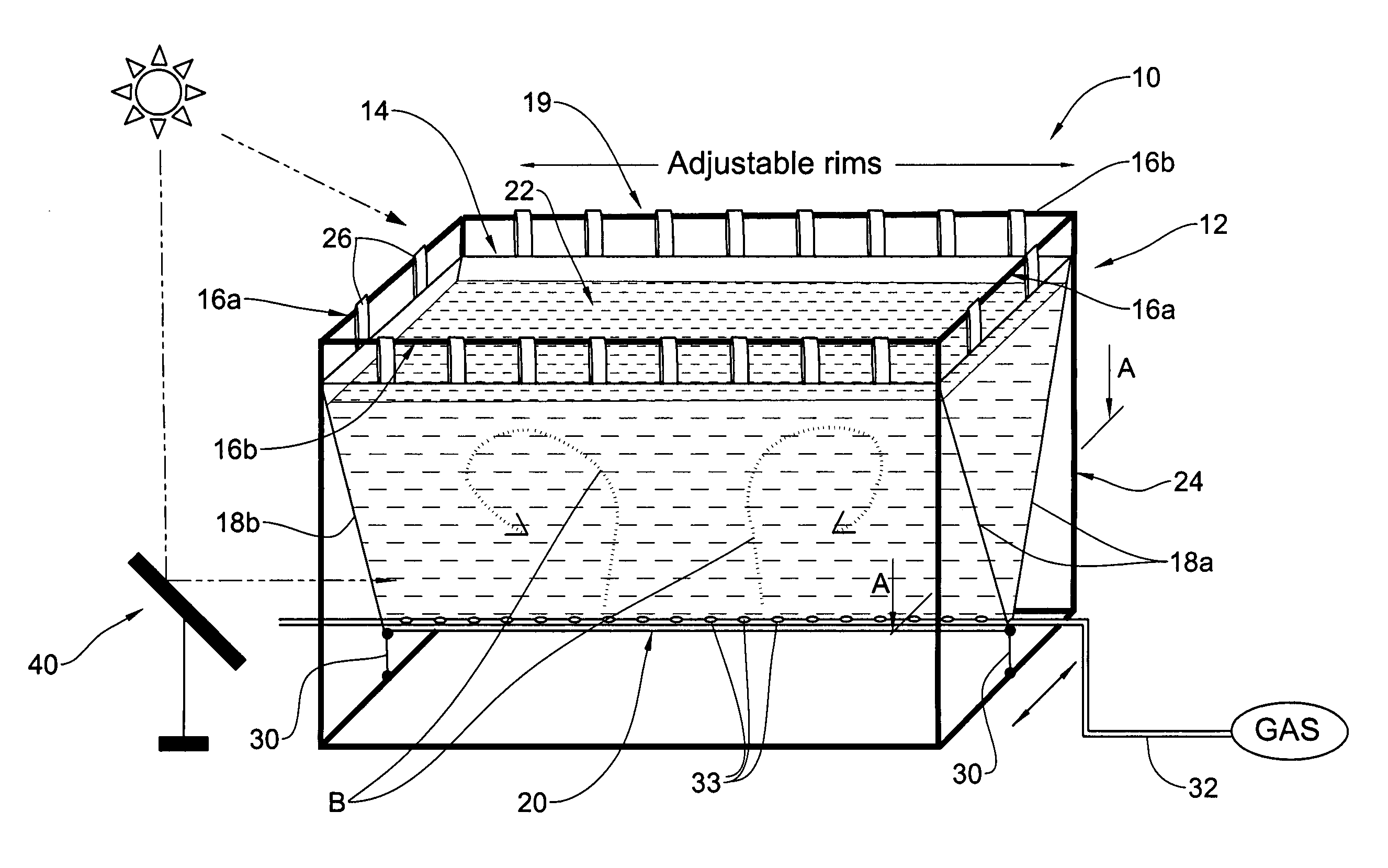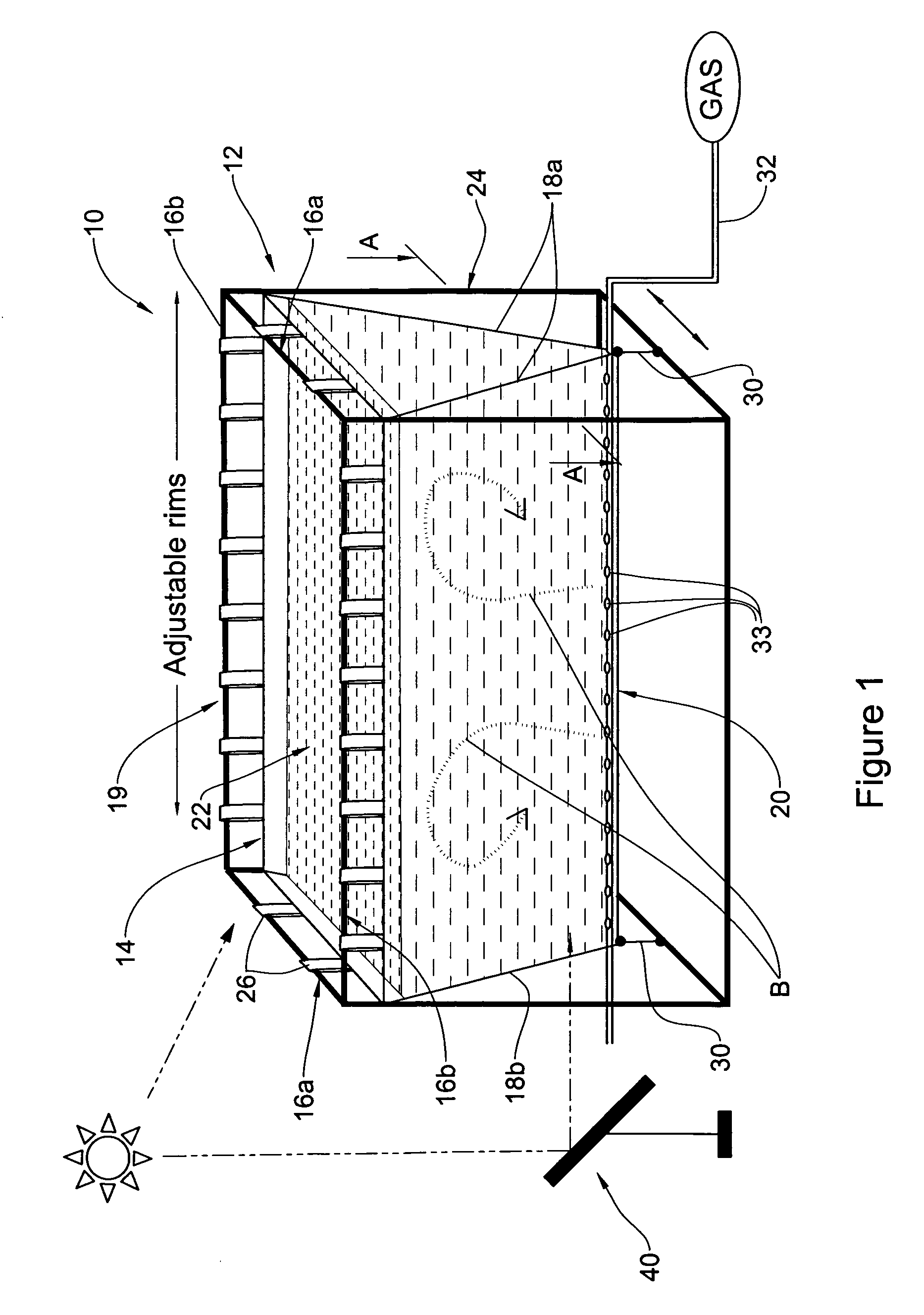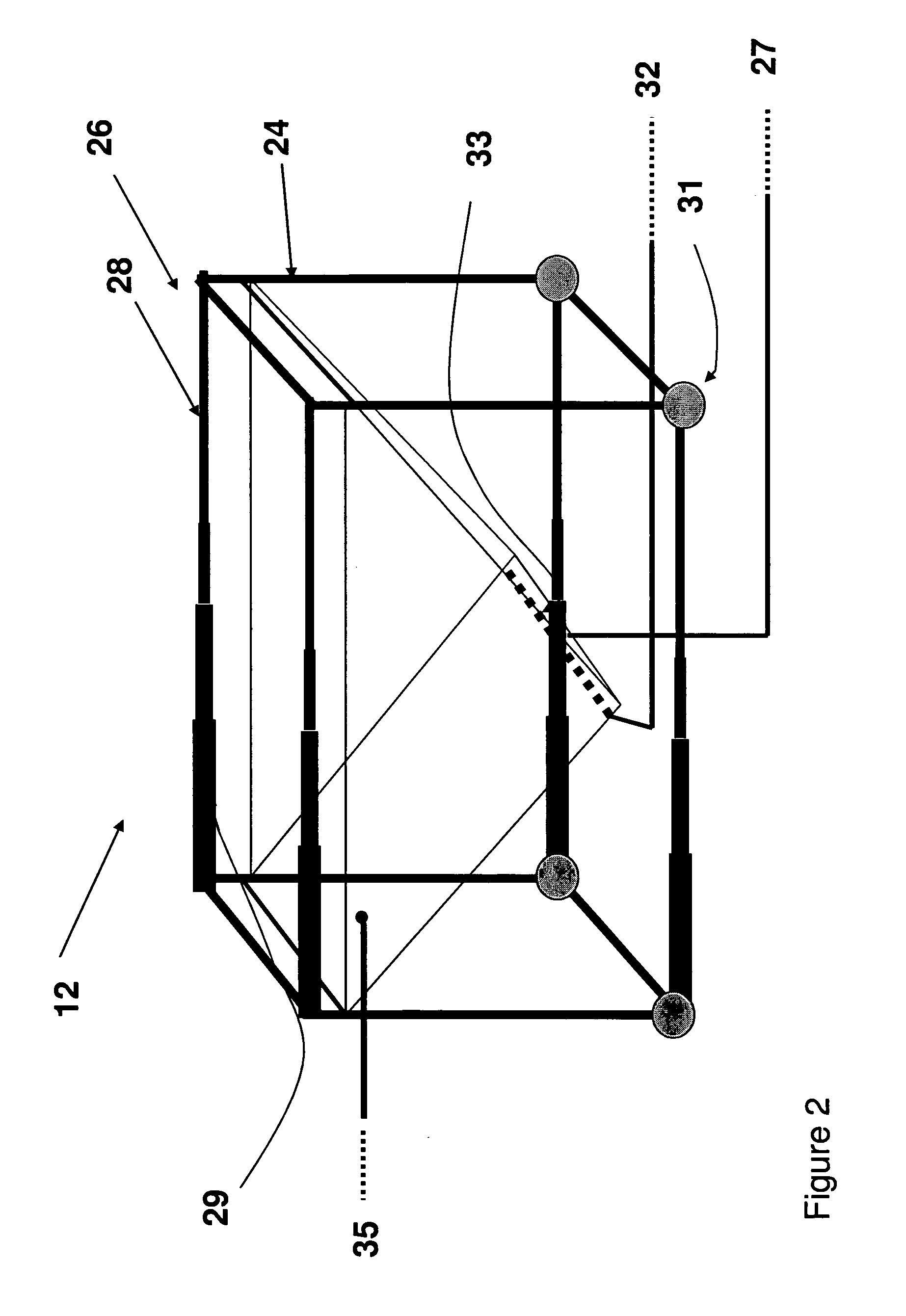System and plant for cultivation of aquatic organisms
a technology of aquatic organisms and systems, applied in the field of systems for cultivating aquatic organisms, can solve the problems of large area requirements, poor light utilization by cells, evaporative loss, etc., and achieve the effect of low energy harvesting
- Summary
- Abstract
- Description
- Claims
- Application Information
AI Technical Summary
Benefits of technology
Problems solved by technology
Method used
Image
Examples
example 1
Construction of Cultivating Units
[0123]Two exemplary systems were designed and constructed: for 500 L and a 1,500 L tank volumes, with different depths and angels as shown in FIGS. 7A and 7B.
[0124]The two systems included a load bearing structure made of galvanized iron bars, and a carrier in the form of a metal net having (before angulating) a rectangle shape of the size 2 m×3 m, the gaps of the net having the size of 5 cm×10 cm. The net was angulated and welded onto the metal structure.
[0125]The tank was made from a sheet of commercially available transparent PVC (1.37 width), 1 mm width which was welded on its borders to create the inner shape (V) and the required sealing to avoid leaking. The edges of the PVC sheet were punctured to form a series of ringed holes for connecting with the top rims of the load bearing structure. The bottom portion of the PVC contained an outlet for harvesting the biomass, after separation process, the outlet was sealed with a removable tap.
[0126]Wat...
example 2
Algae Culturing
Strains and Medium
[0129]The two exemplary systems were used to inoculate, separately, Nannochloropsis sp., Dunaliela tertiolecta and Coccomyxa sp. purchased from the culture collection in Scotland (CCAP).
[0130]Algae cultures were grown in artificial sea water (ASW and f / 2 [Guillard R. R. L. and Ryther J. H. 1962. Studies of marine planktonic diatoms Cyclotella nana and Detonula confervacea. J. Microbiol. 8, pp. 229-239; Guillard R. R. L. 1975. Culture of phytoplankton for feeding marine invertebrates. pp 26-60. In Smith W. L. and Chanley M. H (Eds.) Culture of Marine Invertebrate Animals. Plenum Press, New York, USA.]) pH 8.2, according to CCAP protocols (culture collection of algae and protozoa, www.ccap.ac.uk), with continuous air bubbling.
[0131]Dunalialla tertiolecta was grown to a maximum density of 30-55×106 cells / ml, Nannochloropsis sp. and Coccomyxa sp. were grown to a maximum density of 100-450×106 cells / ml.
[0132]A designated air blower generated a turbulent f...
example 3
Lipid Production
[0142]Nannochloropsis salina was grown for 10 days in f / 2 medium, PH 8.2, with KNO3 that was used as the only nitrogen source. The pH was maintained in the range of 7-8 and controlled the levels of CO2 supply. Natural lipids accumulated 24 h after reaching maximal cell density (early stationary phase) 2.0-2.8 g / L or in response to nitrogen limitations.
[0143]Oil was extracted from dry biomass and triglycerides were analyzed by thin layer chromatography (TLC) using triolein (1 mg / ml) as a standard. Oil content was 25%-35% of dry weight biomass in early stationary phase but under nitrogen limitation, oil accumulated earlier and exceeded 35% (data not shown). Therefore the system of the invention provides an alternative, cost effective, system for growing algae for biofuel or oil, with an advantage of enabling medium variations, in contradiction to some known systems, such as race ways and other open ponds, where the medium cannot be changes during cultivation.
PUM
| Property | Measurement | Unit |
|---|---|---|
| light transmittance | aaaaa | aaaaa |
| angle | aaaaa | aaaaa |
| angle | aaaaa | aaaaa |
Abstract
Description
Claims
Application Information
 Login to View More
Login to View More - R&D
- Intellectual Property
- Life Sciences
- Materials
- Tech Scout
- Unparalleled Data Quality
- Higher Quality Content
- 60% Fewer Hallucinations
Browse by: Latest US Patents, China's latest patents, Technical Efficacy Thesaurus, Application Domain, Technology Topic, Popular Technical Reports.
© 2025 PatSnap. All rights reserved.Legal|Privacy policy|Modern Slavery Act Transparency Statement|Sitemap|About US| Contact US: help@patsnap.com



